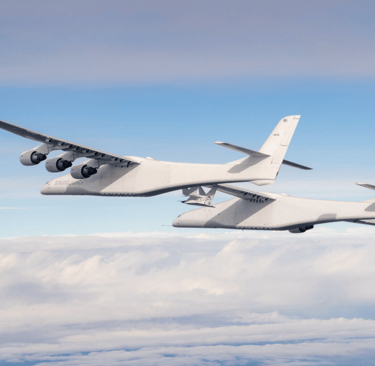The Plane That Shouldn’t Exist (But Absolutely Does)
The Stratolaunch Roc isn’t just big – it’s the widest aircraft ever to fly, a twin-fuselage sky leviathan built to drop hypersonic vehicles from 35,000 ft. No cargo, no passengers, just pure airborne insanity engineered for the Pentagon’s fastest ambitions. Dive into the monster machine redefining what “too big” means.
SCIENCE AND TECHNOLOGYMILITARY
11/10/20252 min read


There are big planes. There are very big planes. And then there’s the Stratolaunch Roc, an aircraft so unnecessarily massive that even the Antonov would look at it and quietly whisper, “Mate, you alright?”
The Roc isn’t here to carry your Amazon parcels or your gran’s suitcase to Tenerife. Its job is stranger, more niche, and significantly more dramatic: haul hypersonic vehicles into the sky and drop them like a mother bird yeeting its young into a hurricane. This isn’t cargo aviation. This is controlled chaos with wings.
Its wingspan stretches an absurd 117 metres, something Stratolaunch confirms directly in its own Roc documentation. It leaves even the mighty A380 in the shadow of its twin-fuselage absurdity, and it holds the record on Wikipedia as the widest wingspan ever to fly. Watching it move under its own power feels like a violation of natural law, the same energy as seeing a sofa sprint across your garden.
Everything about Roc screams overcompensation, from the twin fuselages to the six engines inherited from old 747s, a Frankenstein blend of aerospace pedigree and stubborn ambition. And then there’s the payload: the hypersonic Talon-A, a sleek little dart Stratolaunch designed for high-Mach testing, the sort of thing the U.S. Missile Defense Agency keeps pouring money into because apparently Mach 5 is “adorable” and Mach 7 is where the fun starts.
Despite its absurd footprint, Roc’s mission is comically straightforward. It climbs to around 35,000 ft, releases the Talon-A, and lets physics finish the job, the entire concept behind Stratolaunch’s broader mission to make hypersonic testing routine. No pads. No delays. No rockets having an emotional breakdown on the launch rail. Just a gigantic aircraft performing a controlled aerial yeet.
This niche exists because defence agencies looked at traditional launch systems and collectively said “nah.” So Stratolaunch built the biggest wings in history, a feat rooted in the aircraft’s 747-derived heritage and a design philosophy that can best be summarised as “go wider.” And the funding reflects it, especially that contract interest from the Missile Defense Agency, which sees Roc as a flexible, reusable flight lab rather than a one-shot fireworks display.
And the best part? Roc has no downside. No climate guilt. No moral debate. No sanctimonious tech-bro mission statement. It’s just a giant aircraft doing giant aircraft things, unapologetically and with the energy of a bloke whose entire personality is “I lift.”
In a world where every piece of tech claims it will revolutionise humanity, cure loneliness, and make your breakfast, the Roc is refreshingly honest. It’s not here to save the world. It’s here to throw hypersonic darts from the stratosphere because someone asked, “Could we… make it bigger?” and nobody in the room had the spine to stop them.
It’s rare to see engineering this ridiculous, rarer still to see it work, and that alone makes the Roc one of the most unintentionally magnificent machines ever built. As long as defence agencies keep signing cheques and scientists keep muttering about speed, this flying industrial estate will continue lumbering down runways proving aviation hasn’t peaked. It’s just been bored.
And honestly? That’s worth celebrating.
BurstComms.com
Exploring trends that shape our global future.
Sign up for the regular news burst
info@burstcomms.com
Get the next transmission:
© 2025. All rights reserved.
